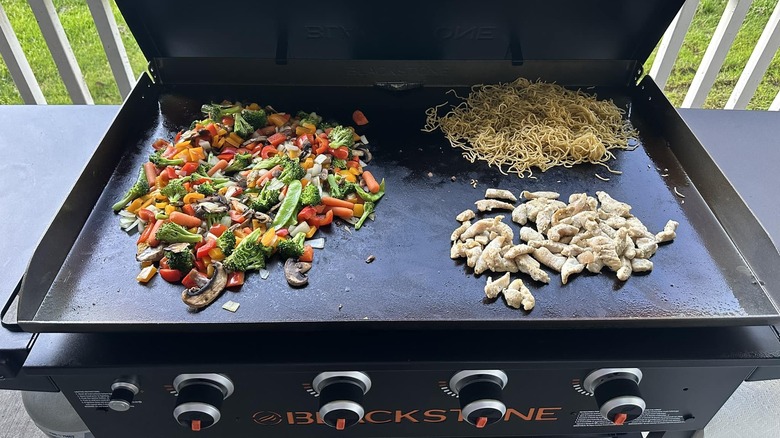How to Cook Vegetables on a Griddle with Tools: A BBQ Guide
Written By James Morgan
Cooking vegetables on a griddle is an art that many barbecue enthusiasts are eager to master. With the right tools and techniques, you can transform simple veggies into a mouthwatering side dish or even a main course. In this guide, we will delve into the steps and strategies for achieving perfectly cooked vegetables on a griddle.

Why Use a Griddle for Vegetables?
Griddles offer a flat, even cooking surface that is ideal for vegetables. The consistent heat distribution ensures that every piece is cooked to perfection, with a delightful char that enhances the natural flavors. Whether you're using a cast iron or non-stick griddle, this method is a game-changer for your BBQ repertoire.
Essential Tools for Griddle Cooking
Before you start, you'll need to gather a few essential tools to make the process smooth and efficient. A high-quality spatula is crucial for flipping and moving vegetables. Check out this griddle spatula thickness guide to find the perfect tool for your needs. Additionally, a scraper is handy for cleaning the griddle surface between batches, as discussed in our griddle scraper vs putty knife article.
Preparing Your Vegetables
Preparation is key to griddle success. Begin by washing and drying your vegetables thoroughly. Chop them into uniform pieces to ensure even cooking. Season them with your choice of spices and a splash of oil to prevent sticking. For more tips on seasoning and maintenance, refer to cast iron maintenance infographic.
Choosing the Right Vegetables
Not all vegetables are created equal when it comes to griddle cooking. Opt for firm, hardy vegetables like bell peppers, zucchini, and onions. These hold up well to the high heat and develop a delicious caramelized exterior. For a more comprehensive list, visit Taste of Home's collection of grilling accessories.
Cooking Techniques for Perfect Vegetables
Now that you have your tools and vegetables ready, it's time to fire up the griddle. Preheat it to medium-high heat, ensuring it's hot enough to sear the veggies without burning them. Place the vegetables on the griddle in a single layer, allowing space between pieces for even cooking. Use your spatula to turn them occasionally, ensuring a nice golden brown color on all sides.
Timing and Temperature
Timing is crucial when cooking vegetables on a griddle. Most vegetables will take between 8 to 12 minutes, depending on their thickness and type. It's important to monitor the temperature and adjust as needed to avoid overcooking. For more specific timing guidelines, check out this guide on flat top grill accessories and utensils.
Serving Suggestions and Pairings
Once your vegetables are cooked to perfection, it's time to serve them up. These griddled veggies pair beautifully with grilled meats or can be enjoyed as a standalone dish. Consider adding a squeeze of lemon or a sprinkle of fresh herbs for an added flavor boost. For more serving ideas, our Amazon Basics cast iron guide offers tips on cooking and pairing.
Storing and Reusing Leftovers
If you have leftovers, store them in an airtight container in the refrigerator for up to three days. Griddled vegetables can be easily reheated or repurposed in salads and sandwiches, making them a versatile addition to your meal prep routine.
Conclusion
Cooking vegetables on a griddle is a rewarding experience that enhances any barbecue. With the right tools and techniques, you can create delicious, healthy dishes that impress your guests. Whether you're a seasoned pro or a beginner, these tips will elevate your BBQ game.

FAQs
What are the best vegetables for griddle cooking?
Firm vegetables like bell peppers, zucchini, and onions are ideal for griddle cooking due to their ability to hold up to high heat.
Can I use a non-stick griddle for vegetables?
Yes, a non-stick griddle is suitable for vegetables, but ensure it's preheated and oiled to prevent sticking.
How do I clean my griddle after cooking?
Use a scraper to remove any residue and wipe the surface with a damp cloth. For detailed cleaning tips, refer to NY Times Wirecutter's guide.
This article contains affiliate links. We may earn a commission at no extra cost to you.



